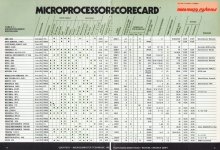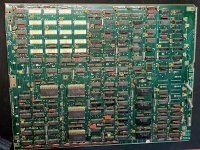nigwil
Experienced Member
@kuro68k
Great effort, this will be quite useful to everyone to better understand how the families developed over time.
My feedback:
IBM was producing copies of the Intel 486 too: https://www.cpu-world.com/CPUs/80486/MANUF-IBM.html
Zilog Z80000 - I still think this was only a paper-design and was never taped out. I've asked any Zilog people I've bumped into about this, and kept watchful for any evidence that it ever made it into silicon but I see nothing so far. If anyone knows different I would be glad to learn about it.
Great effort, this will be quite useful to everyone to better understand how the families developed over time.
My feedback:
IBM was producing copies of the Intel 486 too: https://www.cpu-world.com/CPUs/80486/MANUF-IBM.html
Zilog Z80000 - I still think this was only a paper-design and was never taped out. I've asked any Zilog people I've bumped into about this, and kept watchful for any evidence that it ever made it into silicon but I see nothing so far. If anyone knows different I would be glad to learn about it.



